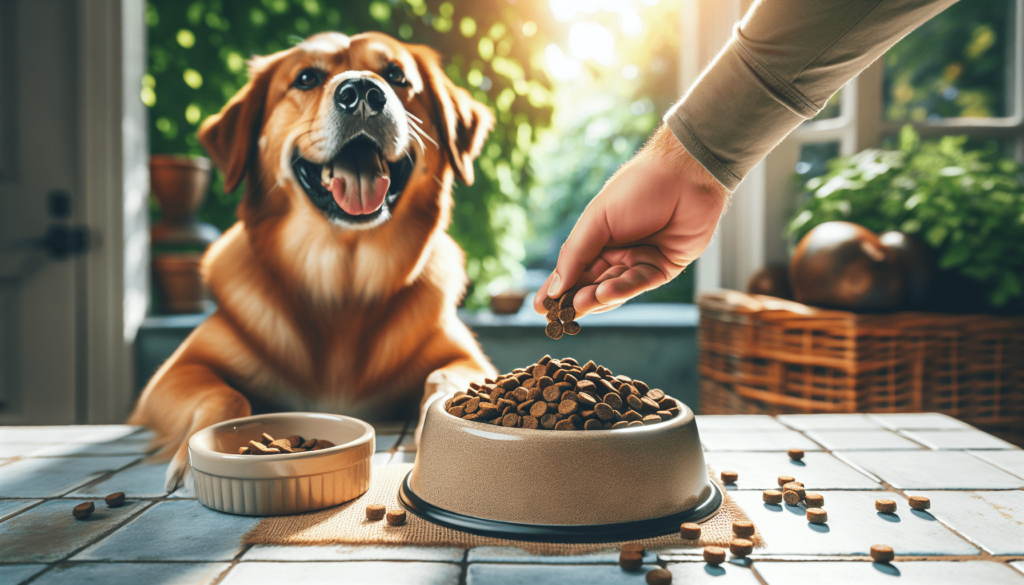Have you ever found yourself wondering, “How do I transition my dog to a new food?” If so, you’re not alone. Transitioning a dog to a new diet is a process that many pet owners face, often with a mix of anxiety and anticipation. Given how much we love our furry friends, ensuring a smooth and healthy transition is paramount. This article will guide you through a comprehensive approach, providing tips and insights to make this change as seamless as possible for both you and your pet. Let’s embark on this informative journey step by step.

Why Change Your Dog’s Food?
Before diving into the process of transitioning, it’s important to understand why a change in your dog’s diet might be necessary. There are several reasons a pet owner might consider a switch, ranging from health concerns to lifestyle changes. Recognizing these reasons can help tailor the transition to be as effective and beneficial as possible.
Health Reasons
A dog might need a new food due to health issues such as allergies, digestive problems, or age-related needs. For instance, a senior dog might require different nutrients than a puppy, while a dog with allergies might need a specialized diet free from common allergens.
Lifestyle Changes
Changes in lifestyle, like moving to a new climate, can also necessitate a change in diet. A dog living in a colder climate might require more calories, while in a warmer environment, a lower-calorie diet might be ideal.
Developing Tastes
Sometimes, dogs develop preferences or become picky eaters, prompting a change. As dogs age, their taste can change, leading to a need to keep their diet appealing and nutritious.
Planning the Transition
An essential aspect of transitioning your dog to a new food is planning ahead. This involves understanding both your dog’s current dietary needs and how the new food will meet them. A well-thought-out plan minimizes stress and maximizes the health benefits of switching foods.
Gradual Transitioning Plan
The key to successfully transitioning your dog to new food is to do it gradually. A sudden change can lead to digestive issues, including vomiting or diarrhea. A recommended approach is to transition over a 7 to 10-day period.
Transition Schedule
| Day | Current Food | New Food |
|---|---|---|
| 1 – 2 | 75% | 25% |
| 3 – 4 | 50% | 50% |
| 5 – 6 | 25% | 75% |
| 7 – 10 | 0% | 100% |
This schedule allows your dog’s digestive system to adjust gradually to the new ingredients and nutrients. Monitoring your dog’s health and behavior throughout the process is crucial to ensure a smooth transition.

Choosing the Right Food
Choosing the right food involves understanding the nutritional needs specific to your dog, as well as any potential health issues. Consulting with a veterinarian is always a good step. They can help identify a suitable diet based on your dog’s individual needs.
Reading Labels and Ingredients
Becoming adept at reading dog food labels is a valuable skill. The ingredients list can provide insights into the quality and types of protein, carbohydrates, and fats in the food. Look for foods with whole ingredients and minimal fillers.
Special Diets
Some dogs may require special diets, such as grain-free or high-protein foods. It’s essential to choose a diet that provides a balanced nutritional profile while catering to any specific health conditions your dog may have.
Monitoring Your Dog’s Health During Transition
Keeping an eye on your dog’s health during the transition is critical. A dog’s reaction to a new diet can vary, making it crucial to monitor for signs of happiness and contentment, as well as any adverse reactions.
Signs of a Smooth Transition
An ideal transition is marked by stable digestion, increased energy, and continued interest in the new food. If your dog continues to have regular, firm bowel movements and seems happy, you’re likely on the right track.
Signs of Trouble
On the other hand, if your dog experiences diarrhea, reduced appetite, or changes in behavior, it may be a sign that the transition is happening too quickly or that the new food is not suitable. Consult with a veterinarian if issues persist.
Patience and Adjustments
Transitioning your dog to a new food isn’t always a straightforward process. Sometimes, adjustments to your initial plan are necessary to optimize the switch. Being patient and willing to adjust is key to a successful transition.
When to Slow Down
If you notice your dog having difficulty adjusting, consider slowing down the transition. Extending the timeline can give your dog’s digestive system more time to adapt to the new nutrients without the pressure of a strict deadline.
Seeking Professional Guidance
Never hesitate to consult with a vet if you have concerns. Their expertise can often provide personalized advice that aligns with your dog’s health needs and lifestyle.
FAQ
How do I transition my dog to a new food?
The best way to transition your dog to new food is gradually, over a 7-10 day period. Start by mixing a small amount of the new food with the current food, gradually increasing the new food’s proportion while decreasing the old food until the transition is complete.
What should I do if my dog has an adverse reaction to the new food?
If your dog shows signs of an adverse reaction, such as diarrhea or vomiting, consider pausing the transition or slowing it down. Consult with a veterinarian if symptoms persist. They might suggest trying a different brand or type of food.
How can I determine if the new food is suitable for my dog?
You can tell if the new food is suitable if your dog maintains a healthy weight, has normal energy levels, and exhibits good overall health. Regular vet check-ups are also important to ensure that the new diet meets all nutritional needs.
Can I revert to the old food if the new food doesn’t suit my dog?
Yes, if the new food doesn’t suit your dog, it’s perfectly fine to revert to the old food until a better option is found. Transition back to the original food gradually, just as you would when introducing new food.
How often should I change my dog’s diet?
There isn’t a one-size-fits-all answer, as diet changes depend on health, age, and lifestyle. However, it is typically unnecessary to frequently change diets unless there’s a specific reason, such as allergies or dietary recommendations from your vet.
Changing your dog’s food is a journey that requires understanding, patience, and sometimes a bit of trial and error. By approaching the transition with care, you ensure that you cater to your dog’s health and happiness, reinforcing the beautiful bond you share.



